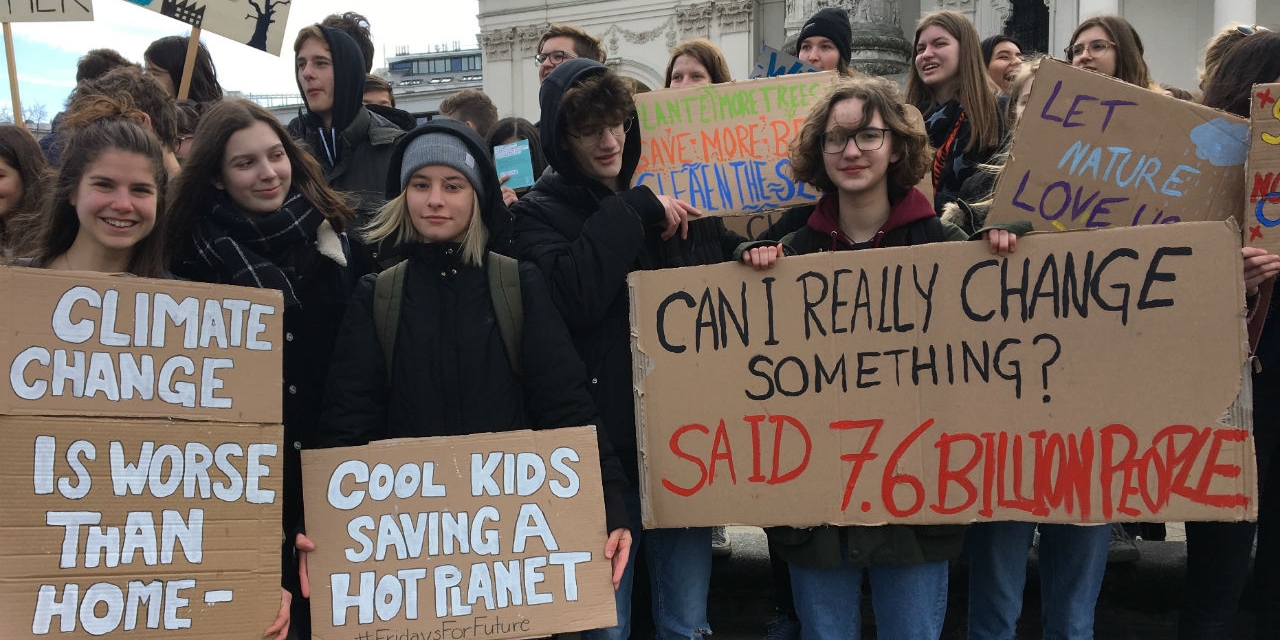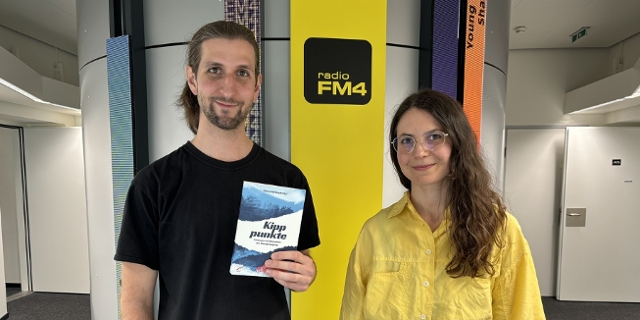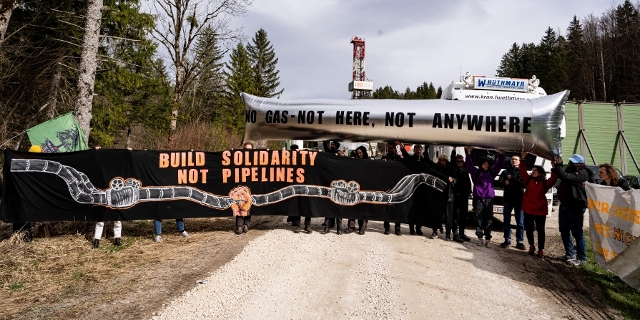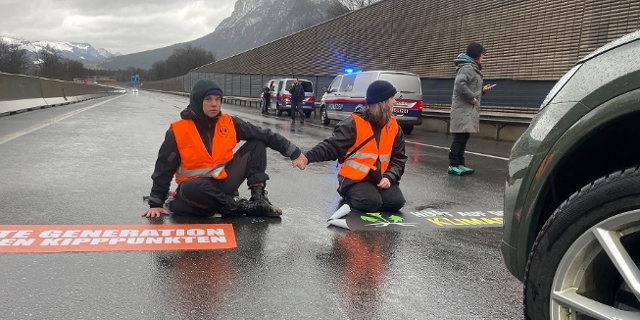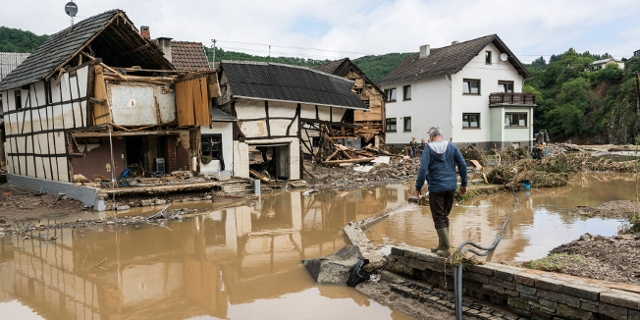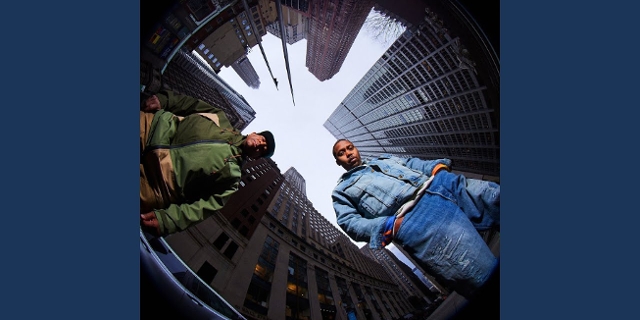Climate Crisis: The Doom And Gloom Has Failed
Today the #FridaysForFuture movement is holding a second round of global climate strikes, aimed at pressuring governments to take more urgent action to tackle and mitigate global warming. Organisers say more than 1.4 million young people around the world took part in the first round of global school and university strikes in March. Today’s event is expected to be even bigger. And the striking students will be joined by a plethora of support groups including #ParentsForFuture and #TeachersForFuture.
The momentum is building.
The young people have rallied around teenage activist Greta Thurnberg’s slogan “Our house is on fire.” Many of them are horrified by the dire forecasts for life on Earth in the coming decades of their adulthood unless drastic action is initiated in the next few months.
The urgency of the situation was highlighted this month even America’s avuncular „Science Guy“ Bill Nye, ditched the mild-manners and got swearily angry on US TV when talking about the dangers of climate change.
Yet the energy and anger has not translated into appropriate climate action. Why not?
Psychologist and economist Per Espen Stoknes, author of the book What We Think About When We (Try Not to) Think About Global Warming, told me, we won’t get concerted action unless we change the way we talk about climate change. And perhaps the swearing won’t help.
Per Espen Stoknes: Climate scientists have been presenting the facts and all the information in very abstract ways that create psychological distance and a sense of too much doom and gloom in general. It is not the scientists’ fault; they are just doing their thing, but the way it comes across in the media generates a backlash against engagement. So, if we want engagement rather than people shutting down their minds we need to do something different in the way we speak about climate change.
Chris Cummins: You come from the field of psychology, so your field of expertise is telling you that, when people are made to feel guilty or given a sense of despair, we come up with all sorts of defence mechanisms. Are these basically excuses?
That’s right. This comes out of something called cognitive dissonance theory which in plain English means I feel uneasy or discomfort in myself when I am doing something that I know I shouldn’t be doing. For example, take smoking. I know I shouldn’t smoke because it causes cancer but then I do take a smoke and that is then uncomfortable for me then the brain comes with self-justifications all the time.
So, for instance I can say that my friend is smoking even more than I do so it doesn’t really matter for me. So, If I fly away on holiday I guess say I don’t have to feel bad because I only flew to Greece while my mate flew to Thailand?
Exactly. Or you can say the plane was going anyway so it doesn’t really matter if I am on it or not.
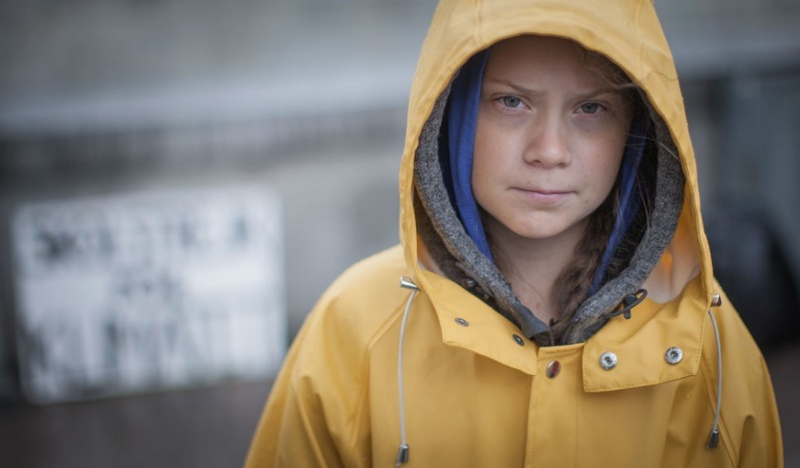
Anders Hellberg
You are wary of making people feel too guilty. We have seen this phenomenon in recent months of Fridays For Future led by Greta Thunberg who has been making the governing generations feel very guilty with her statements like “Our house is on fire!” which are full of doom and full of blame. Do you feel then that she is destined to fail?
Luckily, Greta Thunberg is a fresh voice in this area because for many years climate scientists and climate activists have been saying we have to this now because of our children or grandchildren. She embodies that generation and she doesn’t talk about catastrophe as much as she points out we have a crisis on our hands and we are behaving as if there is no crisis so her main point has been to point out the lack of action. And, when she speaks she represents the future generation and she also does a very personal pitch in that she says, “I want you to feel the fear I feel.” She is speaking out of her own experience of depression.
So she is using doom and gloom but this time it works because it is a personal take that people can relate to in away they haven’t with the more abstract scenarios?
Exactly, and most of what she does is also social invitations. When she is on the street she is inviting others to join her and so she helps build a social network. Doing something together is the best way to counter the sense distance some people feel when we talk about climate change.
So, this sense of community is important in describing the problem. What role does it play in galvanizing action against climate change?
When we speak about the climate change as something that is going to affect us in the future, say in 2050 or 2100, or something happening in the Arctic or storms in the Atlantic or Pacific then it feels a long way away, but when we are doing something together, for example if my child is going to a climate strike, then it is no longer far away, it is inside the social networks and communities of which I am a part and then I want to be engaged in that as well.
When we see cities from above it is interesting that you see clusters of houses with solar panels on their roofs and you say that is no coincidence?
Research has shown that solar panels seem to spread from neighbour to neighbour. If I see my neighbour is getting a solar panel or an electric bike then I want one too. So it is truly the cause that rooftop solar power is contagious. It spreads like a virus.
You are talking of very local way of thinking in our responses to a global problem. I suppose that is also true to our perception of threats because, although we feel sad when we read about coastal erosion in the tropics due to climate change, it is when we realise that fossil fuel emissions from cars are damaging our own children’s health on their way to school that we really start demanding action?
Yeah, that is when the combination of social and local comes into play. It’s near, it’s my family, it’s my community and it is also linked to health. Research also shows that if we speak of climate change as a health issues rather than a scientific or global energy issue then people relate much more to it. When they hear that people suffer from asthma or die prematurely from air pollutions in their own cities then climate change feels nearer and much more urgent. We then prioritize it higher and demand more action from our political leaders.

Per Espen Stoknes
Psychologist and economist Per Espen Stoknes
And it is an easier sell for politicians when they say we are getting cars out of the city centres, not for the polar bears, but for your children’s health…
Exactly. That is the way to transform climate change from an abstract far away thing that climbs high on people’s priorities. People have long understood that we have climate change and it is a problem but it has been seem as a low priority compared to issues like immigration, education and healthcare but when you can link climate change to these issues then climate change becomes a priority. Then you can persuade them to undertake more ambitious action.
Diskutiere mit!
Publiziert am 24.05.2019







